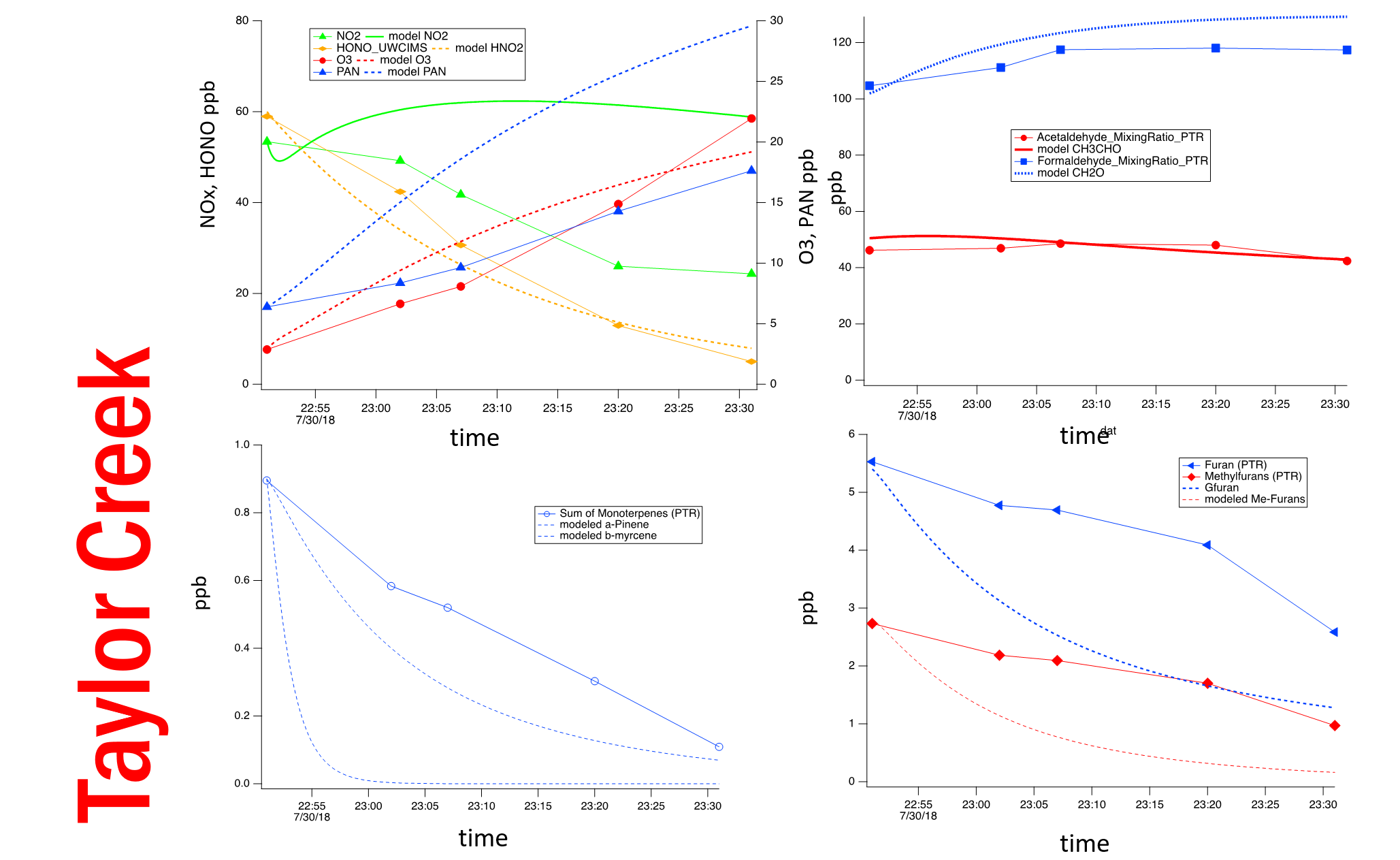Chemical Analysis of Wildfire Plumes
WE-CAN (Western Wildfire Experiment for Cloud Chemistry, Aerosol Absorption and Nitrogen) was a CSU-led and NSF-sponsored field campaign that deployed the NCAR/NSF C-130 to explore the physical-chemical properties of biomass burning plumes in the western USA in Summer 2018. ACOM were major participants in this project, contributing to campaign leadership as well as providing measurements of NOx, ozone, radiation, VOCs and chemical tracers.
In addition, ACOM participated in the 2019 FIREX campaign, providing forecasting support, as well as NOx and ozone measurements on board the NOAA Twin Otter and VOC (TOGA-TOF instrument) and radiation (CAFS instrument) measurements on board the NASA DC-8. The data from these flights have been submitted to the data archive and data analysis is just underway.
ACOM scientists are currently leading a study to examine the detailed chemical evolution of WE-CAN fire plumes, using the GECKO-A explicit chemical mechanism generator / box model system. A major goal of the study is to examine chemistry occurring between the actual fire and the first aircraft encounter of the plume (typically ≈ 0.5 hr later), via the consideration of laboratory-based fire emission measurements and C-130 data. At present, focus is on the Taylor Creek and Bear Trap fire plumes, which differ greatly in their chemical characteristics and propensity for ozone production. Current studies of the Taylor Creek plume show inconsistencies between measurements and models. For example, the observed NO2 decrease in the plume is not captured by the model; and model photolysis of the observed HONO leads to very fast chemistry that generates sufficient ozone, but removes measured hydrocarbon species too rapidly, and overestimates PAN formation. Major collaborators in this study include scientists from Colorado State University, University of Montana, and University of Washington.

Figure 1. Chemical evolution of wildfire plumes. Click for larger image.
The work is tightly connected to the community chamber experiment, MOONLIGHT (Monoterpene and Oxygenated aromatics Oxidation at Night and under LIGHTs). This project, led by ACOM during the spring of 2019 and involving research groups from five universities, consisted of a series of chamber experiments that detailed the oxidation mechanisms for a critical set of biomass burning emissions. As results from this experiment become available, they will be incorporated directly into the GECKO-A mechanism generation system and will be used to improve modeling studies, such as the WE-CAN work described above.